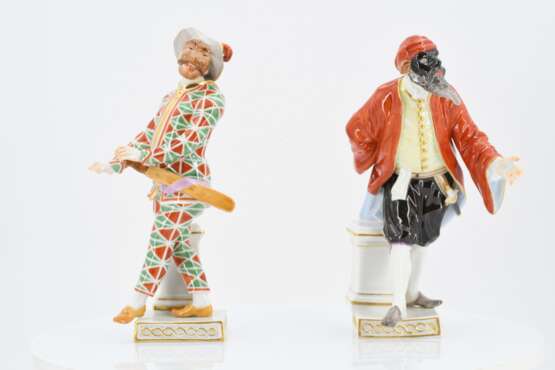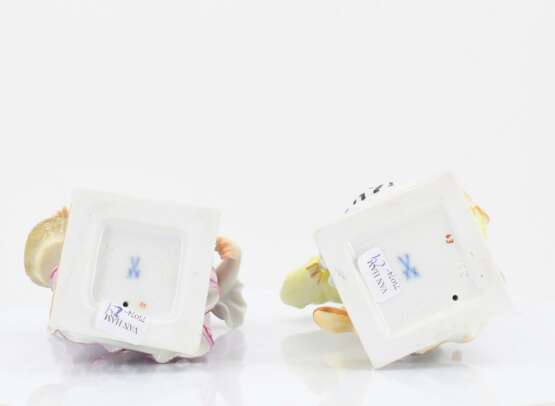ID 841964
Lot 24 | 14 Figurines from the Commedia dell'Arte
Estimate value
€ 7 000 – 9 000
Meissen.
Date: 2nd half 20th century.
Maker/Designer: Model J.J. Kaendler.
Technique: Porcelain, enriched in colors and gold.
Description: Tartaglia, Gnaga, Cortesano, Advokato, Coviello, Pulcinello, Boaro, Brighella, Paliaccio,
Ortolana, Dottore, Gondoliere, Harlekin, Pantalone.
Measurement: Height 17 - 20,5cm.
Mark: Swordsmark, 3 times with grinding mark, 64558/64560-64571/D31.
Provenance:
Private collection Cologne
The characters of the Commedia dell'Arte, which Kaendler interpreted in a lively and perceptive manner, originate from a theatrical form that was performed in Italy as early as the 16th century. Mostly influenced by its two major centers, Venice and Naples, the theatrical form, in which professional theater troupes performed (Commedia dell'Arte loosely translates as 'professional acting'), gained immense popularity in the course of the 17th century. In the 18th century, its popularity reached its international peak and it was cultivated and celebrated in the great cities and important courts of Europe.
A performance of the Commedia dell'Arte was always based on only a briefly outlined sequence of scenes. Therefore improvisation and the interaction with the audience, which was entertained with jokes and quick-witted exchanges, were important aspects of the performance. Another distinctive feature was the recurring repertoire of characters. Each character was defined, had an unchangeable name, its very own costume, and maintained certain characteristics, gestures, postures, tricks, and means of verbal expression. If an actor decided on a role, it usually accompanied him throughout his entire career.
Its distinctive characters, which have a high recognizability, made the Commedia dell'Arte a popular motif for porcelain manufactories in the 18th century. For example, the gentleman in a tall hat and with a long-nosed mask who is holding a sausage on a fork can only be Pulcinella. The gondolier is holding on to his paddle. Even if Tartaglia's stuttering cannot be depicted in porcelain, he can be easily recognized by his glasses and green-striped costume.
| Manufactur: | Meissen Porcelain Factory |
|---|---|
| Auction house category: | Porcelain |
| Manufactur: | Meissen Porcelain Factory |
|---|---|
| Auction house category: | Porcelain |
| Address of auction |
VAN HAM Kunstauktionen GmbH Hitzelerstr. 2 50968 Köln Germany | ||||||||||||||
|---|---|---|---|---|---|---|---|---|---|---|---|---|---|---|---|
| Preview |
| ||||||||||||||
| Phone | +49 221 92586215 | ||||||||||||||
| Fax | +49 221 92 58 62 4 | ||||||||||||||
| Buyer Premium | 32% | ||||||||||||||
| Conditions of purchase | Conditions of purchase | ||||||||||||||
| Business hours | Business hours
|





























